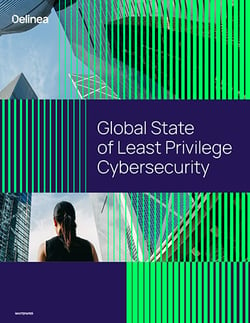
Global State of Least Privilege Cybersecurity
Least privilege security survey report shows overprivileged users are still a big challenge for IT professionals
Most organizations struggle with complexity and user complaints when implementing a least privilege security strategy
- 67% say least privilege is either a top or urgent priority for their organization
- 20% have already tried and failed to implement a least privilege security strategy
- 36% say threats from employees and third parties drives the need for least privilege
- 22% say compliance is their main concern triggering least privilege security projects
Read this report to understand these key takeaways
# 1 – Least privilege security is too complex for a single technology fix; it must be an ongoing program
Driven primarily by concerns with internal and third-party threats, as well as compliance mandates, least privilege security must be viewed as an ongoing program rather than a project that can be solved with any one technology solution.
# 2 – A least privilege security implementation that hinders user productivity will fail
If you want your least privilege security implementation to succeed, you need comprehensive solutions that minimize the impact on user productivity, earn executive-level support, and operate in the background.
# 3 – One size does not fit all for least privilege. Communicate and customize to control.
You must customize your least privilege security strategy to fit the needs of your own organization. Educate users on the value of least privilege while making sure they can do their jobs without compromising security.
